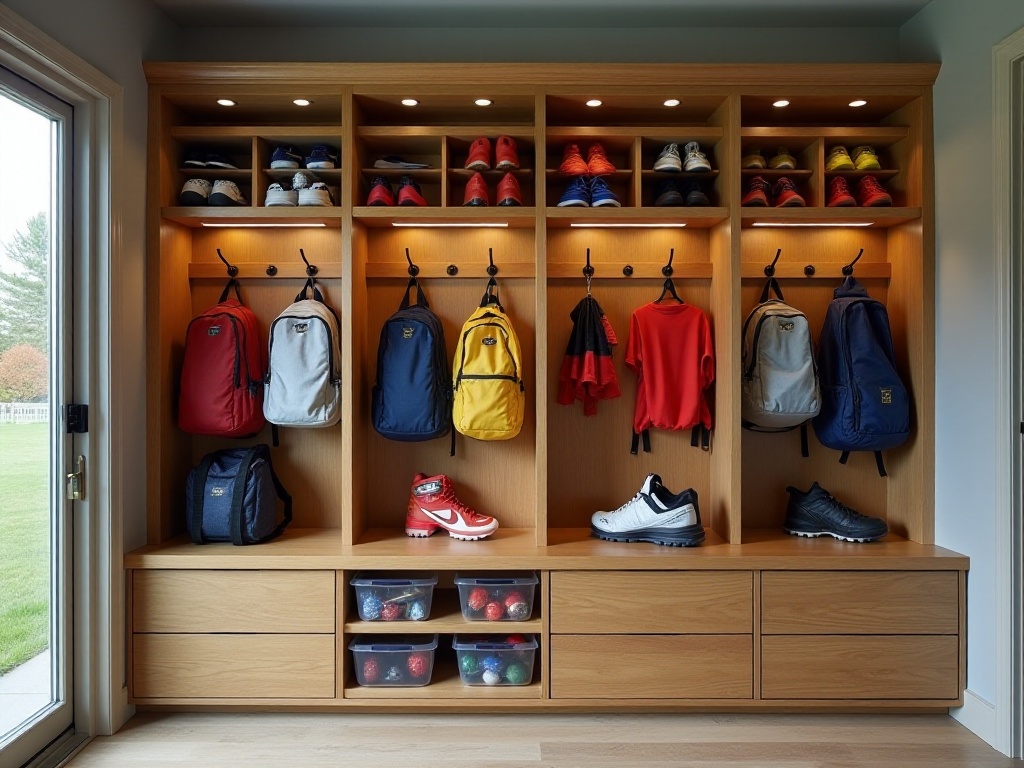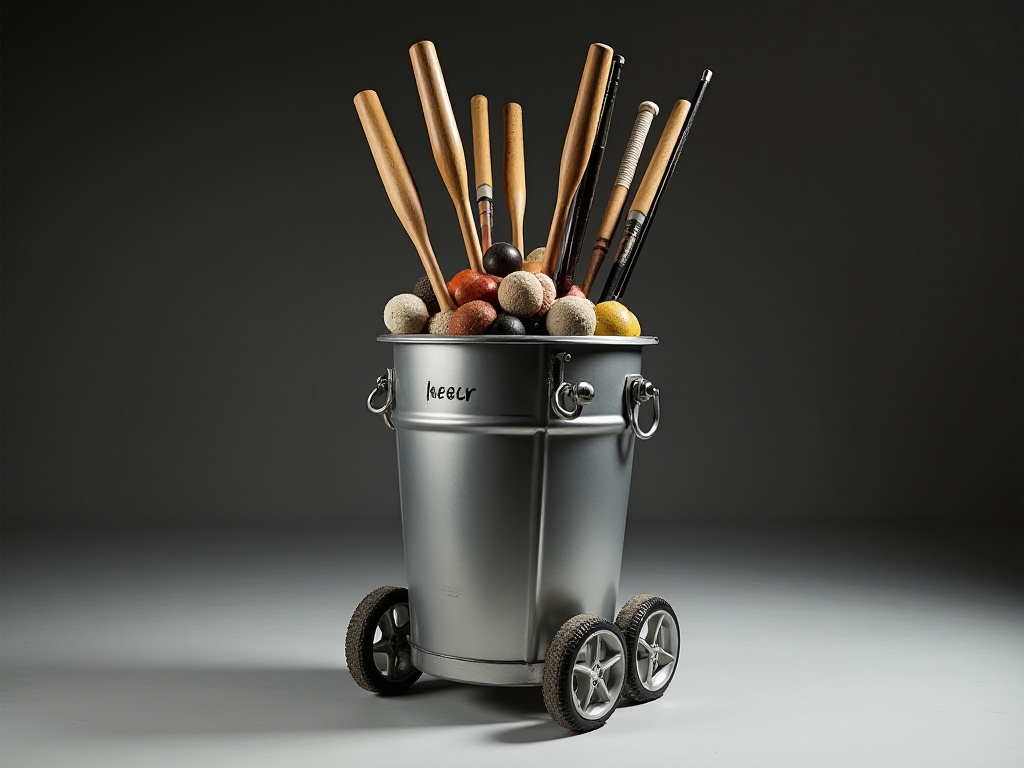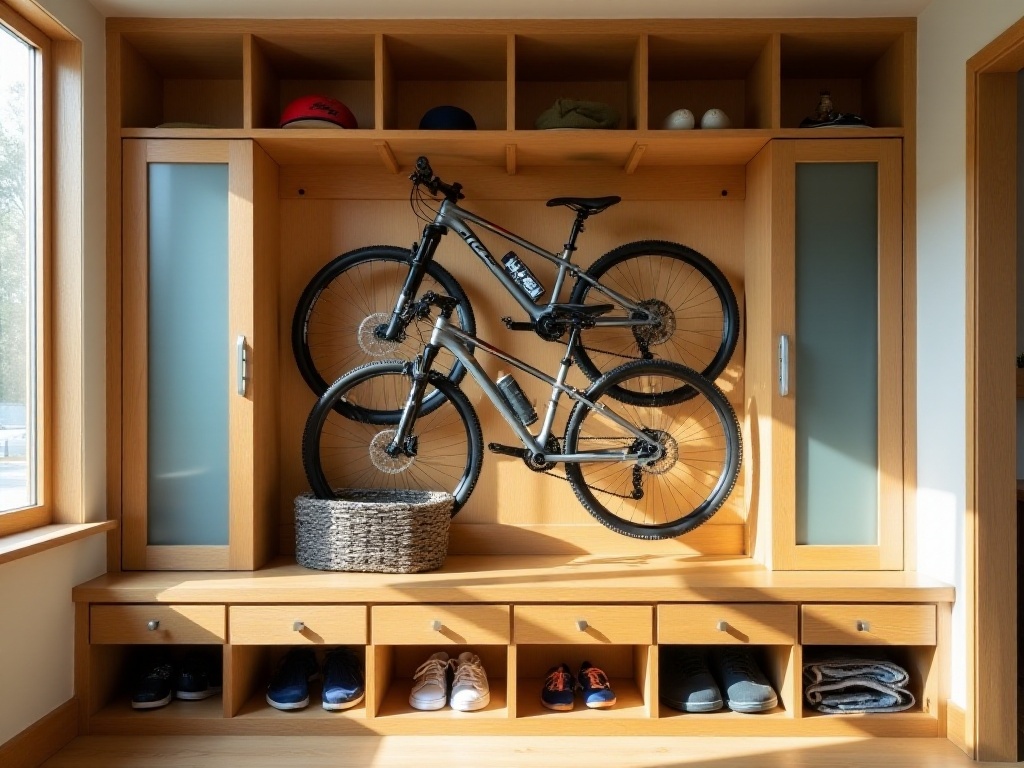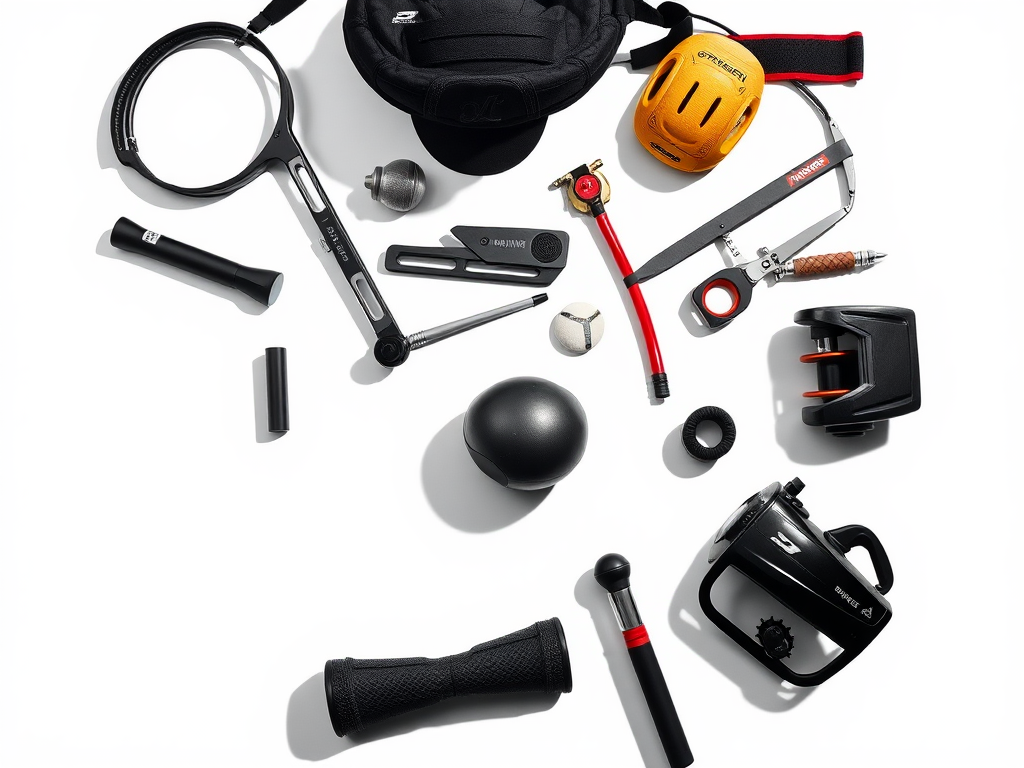Introduction
As a sports enthusiast, I deeply understand the frustration of having disorganized sports equipment at home. Every time I want to exercise, searching for protective gear becomes a hassle, driving me crazy. Sometimes I clearly remember using a pair of sneakers yesterday, but today they seem to have vanished into thin air. Worse still, after working out and being covered in sweat, I'm too lazy to tidy up and just toss things aside, only to find the gear smelling terrible the next day.
After years of trial and error, I've finally developed a super practical storage system that transformed me from a storage novice into a storage expert in my friends' eyes. Today, I'd like to share how to keep your sports equipment neat and organized, making every workout filled with anticipation and joy.
Mobile Storage
To be honest, I started as a storage rookie too, thinking that simply stuffing everything into storage boxes would do the trick. Until one day, I saw a little boy anxiously stamping his feet outside the swimming pool - he had left his goggles in his basketball bag. That's when I realized that for people who frequently carry equipment around, mobile storage is absolutely crucial.
I remember when my cousin first started learning multiple sports last year, she would messily stuff everything into one huge sports bag. Once she even got her taekwondo uniform tangled up with her tennis racket, taking forever to separate them. Unable to watch this anymore, I immediately designed a mobile storage solution for her.
I bought her three different colored foldable storage boxes: blue for swimming gear, including swimsuit, cap, goggles, and towel; red for taekwondo items, with uniform, protective gear, and wraps; and yellow for tennis equipment, where the racket, balls, and water bottle each had their designated spot.
These storage boxes are not only brightly colored but also fit perfectly in the car trunk and are easy to access. Best of all, each box has compartments to organize different equipment separately. For instance, in the swimming box, wet swimsuits have their own waterproof bag, goggles have a special soft pouch, and even swim rings have their proper place.
After using this storage system, my cousin became a completely different person. Every time she goes to training, she can quickly find the equipment she needs, no more scrambling around. More importantly, this categorized storage method makes her equipment more durable, preventing damage from items rubbing against each other.
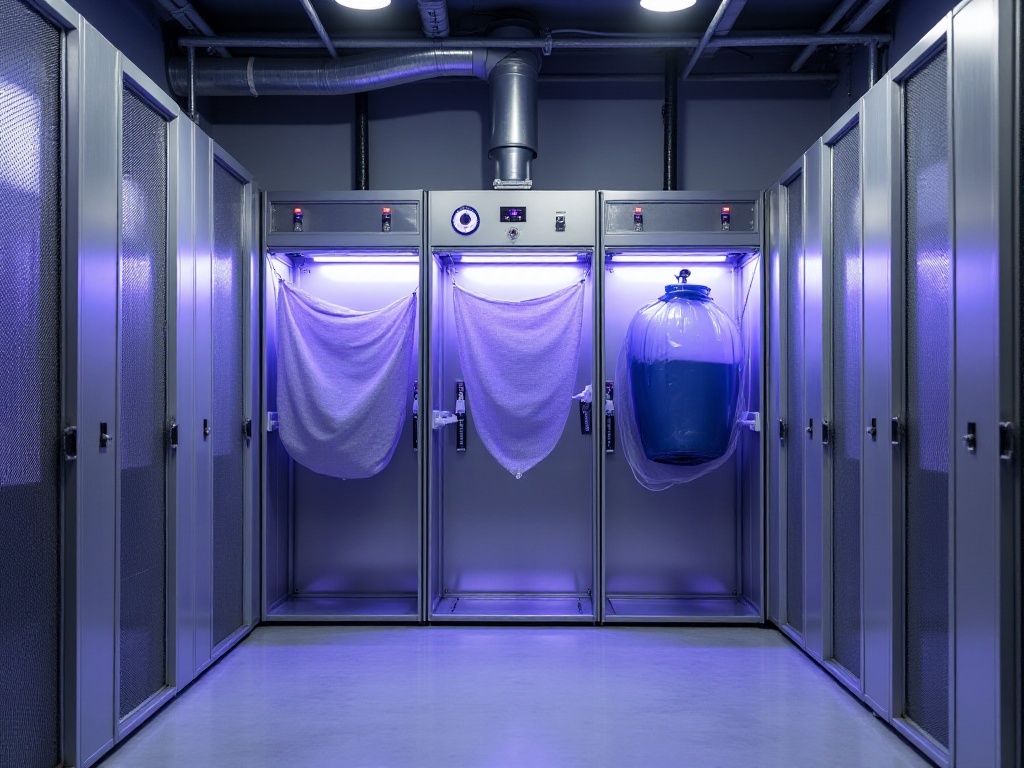
Fixed Storage
When it comes to fixed storage at home, there's quite a bit to learn. I remember when I first started collecting sports equipment, my home looked like a sports store warehouse, with gear randomly placed everywhere. It wasn't until I tripped over my skateboard one day that I finally decided to organize everything properly.
After much research and practice, I discovered that utilizing vertical space is key to solving storage problems. I installed a modular storage system on an entire wall in my garage, including various hooks, storage racks, and shelves. This way, the space-consuming bicycle could be hung vertically on the wall, the skateboard had its own display rack, and all kinds of sports balls could be neatly arranged on the shelves.
However, before starting to organize, I suggest everyone do a major cleanup first. Honestly, I was shocked during my own cleanup. I found several deflated basketballs and old shoes that no longer fit. Rather than keeping these things taking up space, it's better to donate them to those in need or simply throw them away.
My neighbors are a typical example of what not to do. When I helped them organize their garage last year, I was amazed. They had accumulated ten years' worth of sports equipment, including their son's small soccer ball from childhood, their daughter's jump rope from her phase, and even broken ping pong paddles. These items not only took up space but were covered in thick dust, killing any motivation to exercise.
For fixed storage, I have a small trick: make full use of door space. I installed a multi-layer storage rack behind my gym door, specifically for small equipment like yoga mats, resistance bands, and dumbbells. This saves space while keeping items easily accessible - killing two birds with one stone.
For larger equipment like rowing machines or treadmills, I suggest reserving adequate space for use. After all, exercise equipment isn't meant to be displayed but used regularly. I specifically cleared an area in a corner of my living room for the treadmill, where I can start exercising immediately when needed and quickly put it away after use.
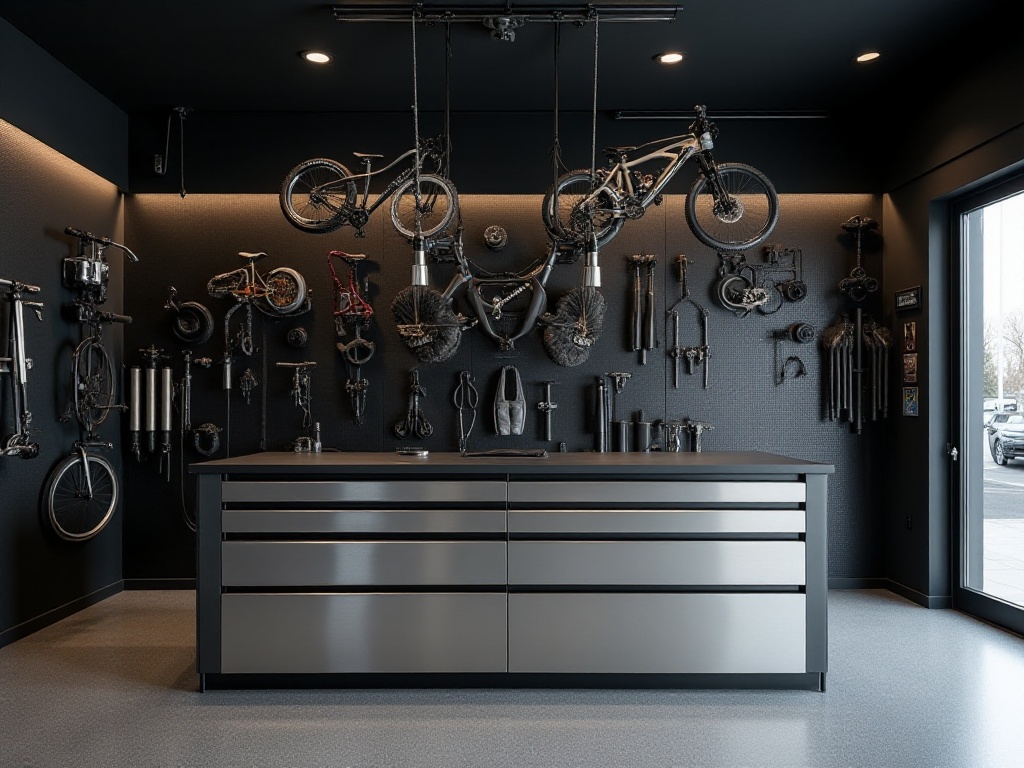
Categorized Storage
When it comes to categorized storage, I have plenty of insights to share. At first, I also just stuffed all sports equipment randomly into storage boxes, resulting in having to turn everything upside down whenever I needed something. Later, I figured out a principle: it's more practical to categorize by sport rather than by size and shape.
Now, all my sports equipment is strictly categorized by activity. For example, all soccer-related equipment is together: balls, cleats, shin guards, training cones, etc. Basketball equipment is the same, with balls, shoes, and wristbands all in one area. The advantage is that whenever I want to exercise, I can immediately find all the necessary equipment without missing anything.
I also pay special attention to equipment usage frequency. For instance, I play badminton several times a week, so I keep the rackets and shuttlecocks in the most accessible location. Seasonal sports equipment, like skiing gear, can be stored on higher shelves or in the storage room.
Another important principle of categorized storage is finding a "home" for each piece of equipment. Like my yoga mat, it must be rolled up and returned to its dedicated vertical storage rack after use. The dartboard, though not frequently used, has its fixed hook. This not only looks neat but also prevents scrambling when looking for things.
During the categorization process, I particularly ensure to leave "breathing" space for equipment. Especially for moisture-prone items like boxing gloves or yoga mats, adequate ventilation is essential. My storage racks are all open-style, ensuring air circulation and preventing equipment from getting moldy.

Deodorizing and Cleaning
Speaking of deodorizing and cleaning sports equipment, that's truly a science. As someone who exercises frequently, I know that if sports equipment isn't cleaned promptly, the smell can be overwhelming. Especially protective gear after summer workouts - if not properly handled, you'll smell fermentation the next day.
After countless trials and failures, I finally found some particularly effective deodorizing methods. The simplest is the freezing method. Put smelly protective gear in a sealed bag, freeze it overnight, take it out to dry the next day, and the odor will be significantly reduced. This method works especially well for sneakers.
Additionally, I've found that sunlight is truly the best deodorizer. Every weekend, I take time to put all sports equipment out on the balcony for sun exposure. However, rubber and plastic items shouldn't be left in direct sunlight as they can deform or deteriorate. I usually choose to sun them during gentler morning or evening light.
For equipment that can't be washed with water, like boxing gloves or protective gear, I use specialized deodorizing sprays. After spraying, let them dry in a ventilated area - it works quite well. Sometimes I also put activated charcoal packets in storage boxes for continuous odor absorption.
Regarding cleaning, I have one iron rule: equipment must be cleaned after each use. For example, after basketball, wipe the ball clean with a clean towel; after soccer, clean the mud off the cleats. This not only keeps equipment clean but also extends its lifespan.
A special reminder: many people overlook deep cleaning of sports equipment. Actually, items like yoga mats occasionally need thorough washing with water and mild detergent. I usually do such major cleaning on sunny weekends to ensure equipment dries completely.
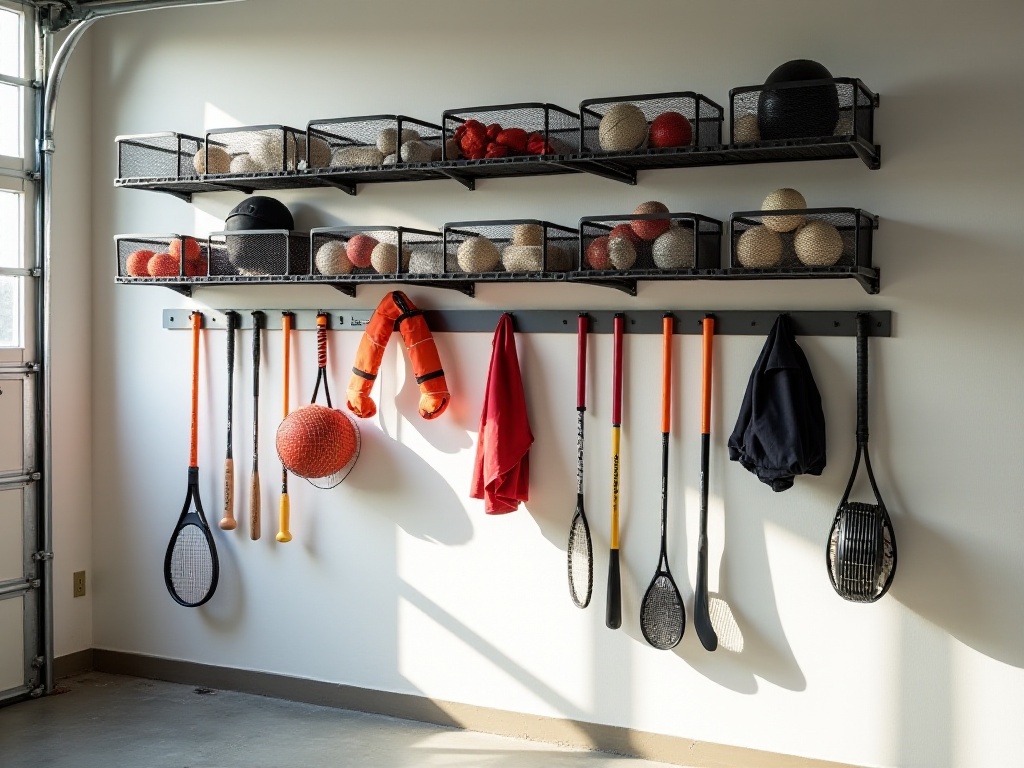
Daily Maintenance
Talking about daily maintenance of sports equipment, it's truly a technical matter. Many people think sports equipment can be used indefinitely after purchase, but that's not the case. Good maintenance habits not only keep equipment in optimal condition but also greatly extend its lifespan.
My maintenance principle is simple: basic care must be done after each use. For example, after badminton, check if the racket strings are loose; after soccer, ensure proper ball pressure; after swimming, rinse swimwear with clean water and hang in a ventilated place.
Special attention must be paid to sweat-prone protective gear like wristbands and knee pads - they must be completely dry before storage. I've seen too many people get lazy and stuff wet protective gear directly into their bags after exercise, only to find it moldy soon after.
Last winter, my friend who plays hockey learned this lesson the hard way. After each training session, he was too lazy to clean his equipment and just stuffed the wet gear into his bag. When he came for the next training session, he found his protective gear not only moldy but also emitting an unpleasant odor. He eventually had to buy a new set - truly penny wise and pound foolish.
Actually, equipment maintenance isn't as troublesome as imagined. My suggestion is to incorporate maintenance into daily habits. For example, I spend five minutes doing simple cleaning after each workout. Put workout clothes in the laundry basket, wipe protective gear dry and place in a ventilated area, return equipment to its designated spot. Once you develop this habit, maintenance becomes particularly easy.
For special equipment like treadmills and other large machines, regular maintenance is essential. I oil my treadmill and check all parts monthly. Although these tasks seem troublesome, they keep equipment in optimal condition and make exercising safer.

Storage Insights
After years of exploration and practice, I've summarized a "three-heart" principle: convenience, simplicity, and peace of mind. This principle seems simple but isn't easy to truly achieve.
Convenience means storage methods should match usage habits. For instance, knowing I use the jump rope every morning, I keep it in the most accessible place. Less frequently used equipment can be stored in more concealed locations. This not only improves efficiency but also makes exercise more relaxed and enjoyable.
Simplicity means making maintenance work easier. My storage systems are all modular, easy to assemble and clean. Each piece of equipment has its fixed position - just return it after use, no need to think about where to put it.
Peace of mind means ensuring equipment safety. My storage racks are specially reinforced and won't loosen even with heavy items. Valuable equipment is kept in moisture-proof boxes to prevent deterioration. This not only protects the equipment but also makes exercising more worry-free.
Through scientific storage and maintenance, my sports equipment is kept in excellent condition. Take my badminton racket that I've used for five years - it still feels great, thanks to good storage and maintenance habits.
Final Words
Looking back on these years of storage experience, I deeply understand one truth: managing sports equipment storage isn't difficult - the key is patience and persistence. Everyone's living environment and exercise habits are different; what's important is finding storage methods that suit you.
Just like exercise requires persistence, storage is also a process requiring continuous practice and improvement. When you develop good storage habits, you'll find exercise becomes easier and more enjoyable. Moreover, good storage habits can save you money on buying new equipment.
So don't wait - start organizing your sports equipment now. Trust me, when you open your storage room and see neatly organized sports equipment, that sense of achievement will make you fall in love with exercise. Let's act together, keep our sports equipment neat and organized, and make every workout full of anticipation and joy!




